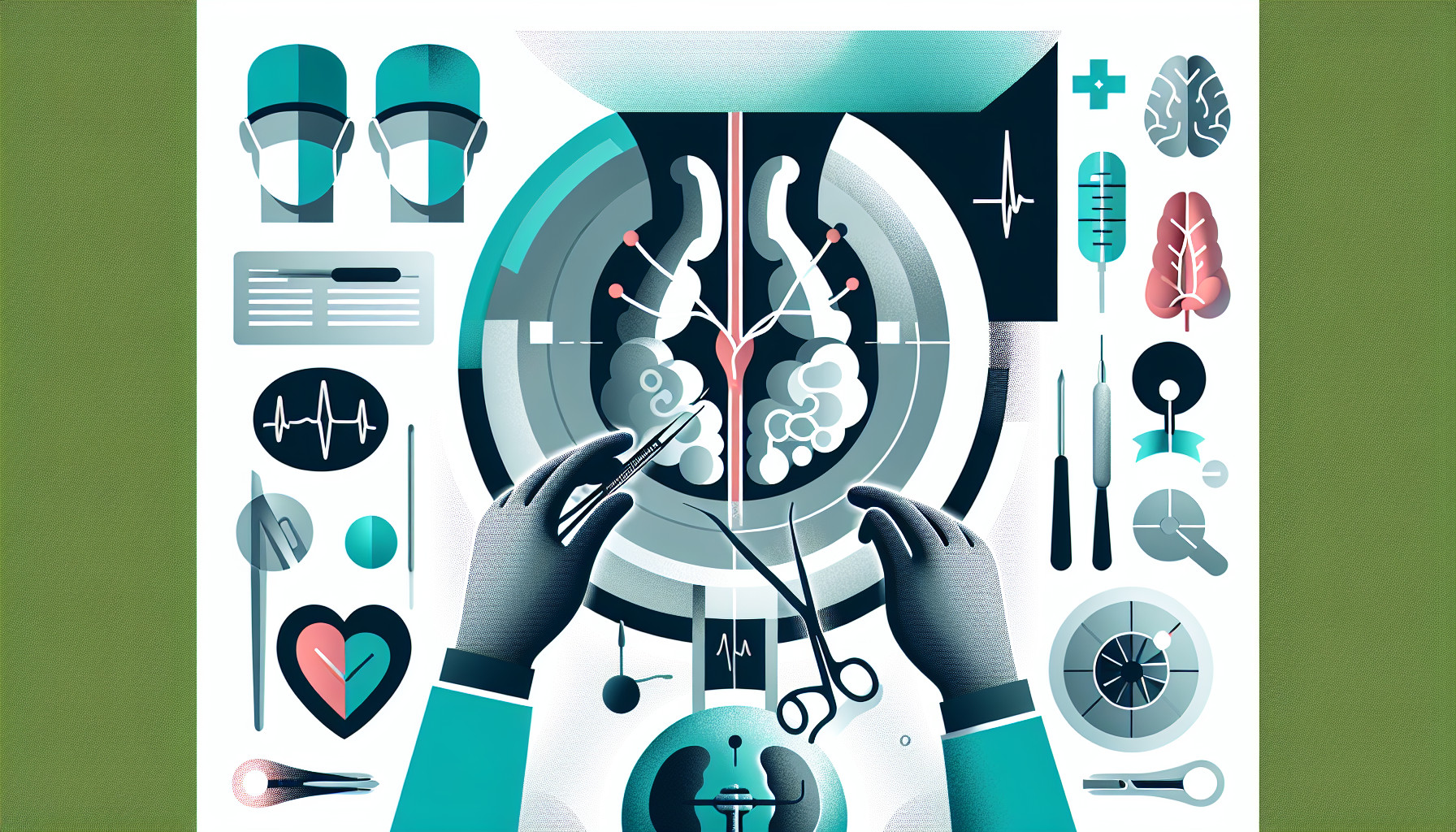Our Summary
This research paper is about a study on the use of penile prosthesis implantation (PPI), a surgical procedure, in treating Peyronie’s disease (PD) and erectile dysfunction (ED). PD is a condition that causes curvature of the penis and ED is a condition that makes it difficult to maintain an erection. The researchers studied various clinical research articles and identified six main types of surgical techniques that can be used to straighten the penis and treat PD. The study concluded that PPI is an effective treatment for patients with PD and ED, with minimal side effects. However, the study didn’t determine which of the six surgical techniques is the best one.
FAQs
- What is the purpose of penile prosthesis implantation (PPI)?
- Is penile prosthesis implantation effective for treating Peyronie’s disease and erectile dysfunction according to the research?
- Did the study determine the best surgical technique out of the six for treating Peyronie’s disease and erectile dysfunction?
Doctor’s Tip
A helpful tip a doctor might tell a patient about penile implant surgery is to follow all pre-operative and post-operative instructions carefully to ensure a successful outcome. This may include abstaining from certain medications, maintaining good hygiene, and attending follow-up appointments with the surgeon. Additionally, patients should communicate openly with their healthcare provider about any concerns or questions they may have throughout the process.
Suitable For
Patients who are typically recommended for penile implant surgery include:
Patients with Peyronie’s disease (PD): PD is a condition in which scar tissue forms inside the penis, causing it to bend or curve during erections. Penile implant surgery can help straighten the penis and improve sexual function for patients with PD.
Patients with erectile dysfunction (ED): ED is a condition in which a man is unable to achieve or maintain an erection sufficient for sexual intercourse. Penile implant surgery can be a treatment option for patients with severe ED who have not responded to other treatments such as medication or vacuum devices.
Patients with severe penile deformities: Penile implant surgery can be recommended for patients with severe penile deformities that affect their ability to engage in sexual activity.
Patients who have undergone prostate cancer treatment: Prostate cancer treatment, such as surgery or radiation therapy, can sometimes result in ED. Penile implant surgery may be recommended for patients who have not responded to other treatments for ED following prostate cancer treatment.
Patients with spinal cord injuries: Spinal cord injuries can result in erectile dysfunction. Penile implant surgery may be considered for patients with spinal cord injuries who are interested in restoring their ability to have erections.
Patients with other medical conditions: Penile implant surgery may be recommended for patients with other medical conditions that affect their ability to achieve or maintain an erection, such as diabetes or cardiovascular disease.
Timeline
Before penile implant surgery:
Consultation with a urologist: The patient will meet with a urologist to discuss their medical history, symptoms, and treatment options, including the possibility of penile implant surgery.
Pre-surgical evaluations: The patient may undergo various tests and evaluations, such as blood tests, imaging studies, and possibly psychological evaluations, to determine if they are a suitable candidate for penile implant surgery.
Decision-making process: The patient and their healthcare provider will discuss the risks and benefits of penile implant surgery and make a decision on whether to proceed with the procedure.
After penile implant surgery:
Hospital stay: The patient will typically stay in the hospital for a day or two after the surgery to recover and receive post-operative care.
Recovery period: The patient will need to rest and avoid strenuous activity for several weeks following the surgery to allow for proper healing.
Follow-up appointments: The patient will have follow-up appointments with their healthcare provider to monitor their progress, address any concerns, and ensure that the implant is functioning properly.
Rehabilitation: The patient may undergo rehabilitation exercises to help restore normal function and sensation in the penis.
Resuming sexual activity: Once the patient has fully healed and received clearance from their healthcare provider, they can gradually resume sexual activity with their partner.
Overall, the timeline for a patient before and after penile implant surgery can vary depending on individual circumstances and the type of implant used. It is important for patients to closely follow their healthcare provider’s instructions and attend all follow-up appointments to ensure a successful recovery.
What to Ask Your Doctor
What are the potential risks and complications associated with penile implant surgery?
How long is the recovery process after penile implant surgery?
Will I still be able to achieve a natural erection after the surgery?
What type of implant will be used in the surgery and how long does it typically last?
How will penile implant surgery affect my sexual function and sensation?
Are there any alternative treatments for my condition that I should consider before opting for surgery?
What is the success rate of penile implant surgery for patients with Peyronie’s disease and erectile dysfunction?
How experienced are you in performing penile implant surgeries?
Will I need to make any lifestyle changes or follow any specific post-operative care instructions after the surgery?
Can you provide me with some references or patient testimonials from previous penile implant surgery patients?
Reference
Authors: Verze P, Sokolakis I, Manfredi C, Collà Ruvolo C, Hatzichristodoulou G, Romero-Otero J. Journal: Minerva Urol Nephrol. 2021 Apr;73(2):196-214. doi: 10.23736/S2724-6051.20.03890-4. Epub 2020 Nov 12. PMID: 33179867
